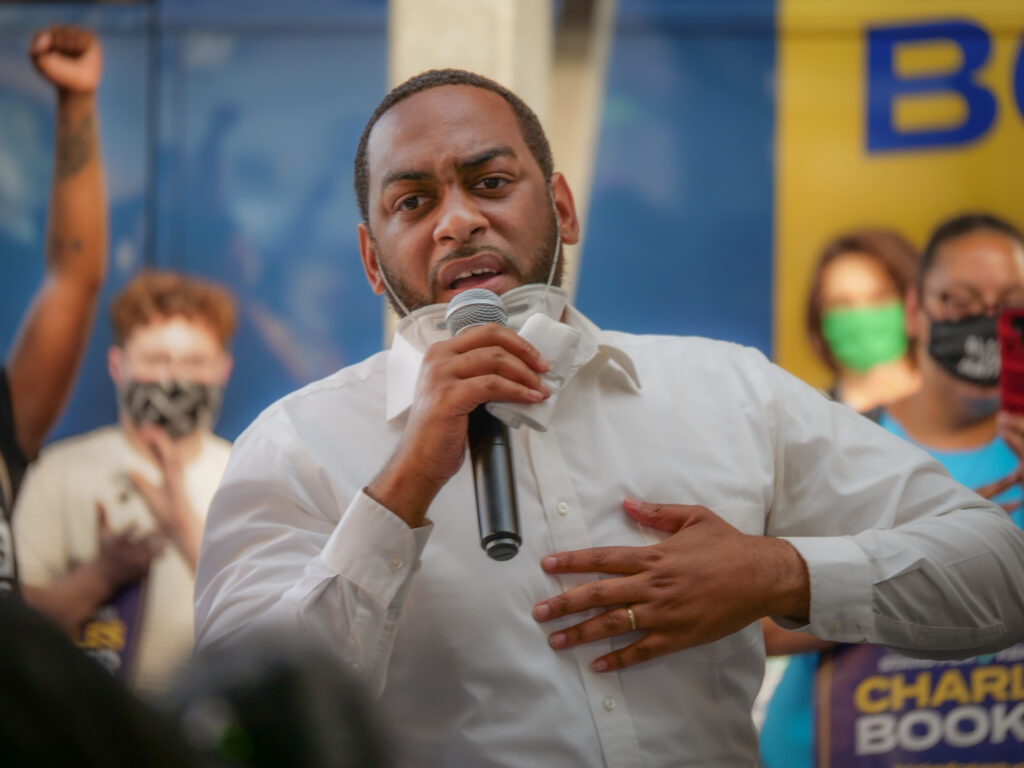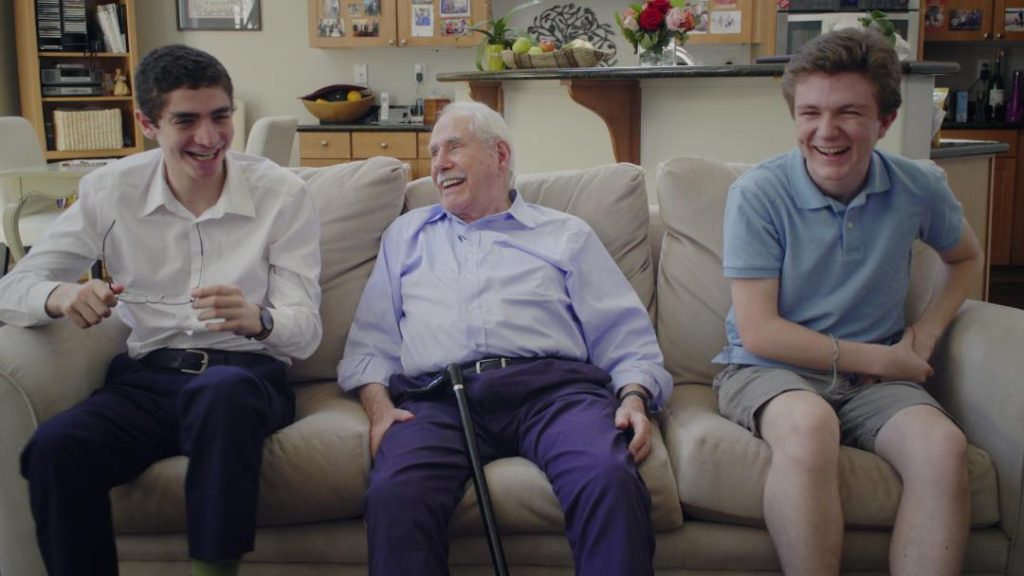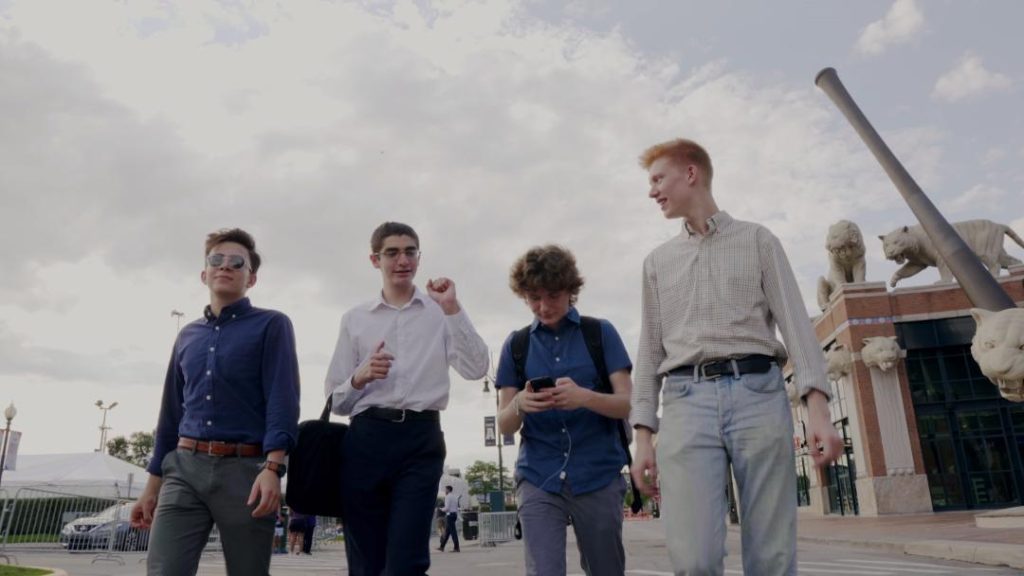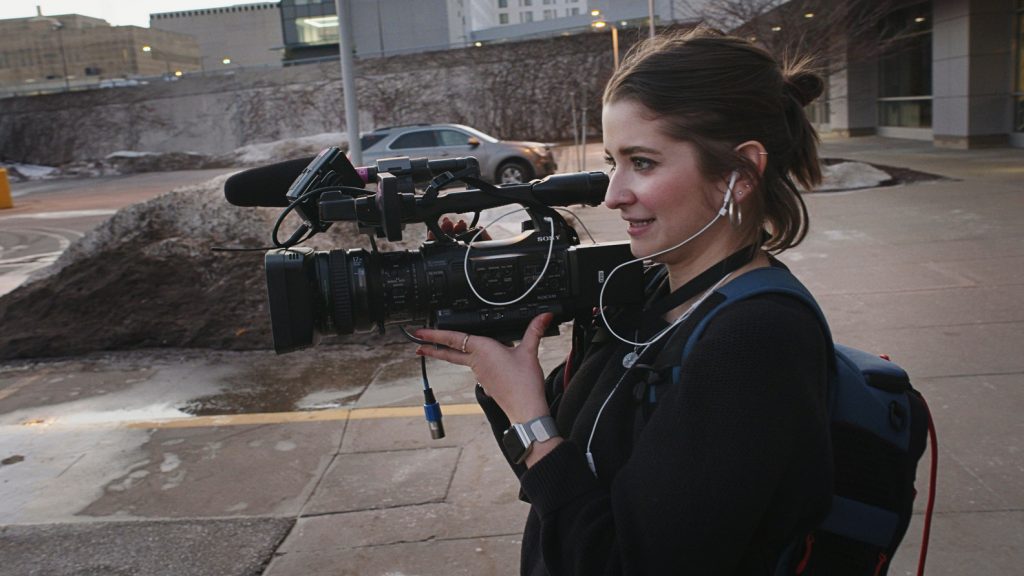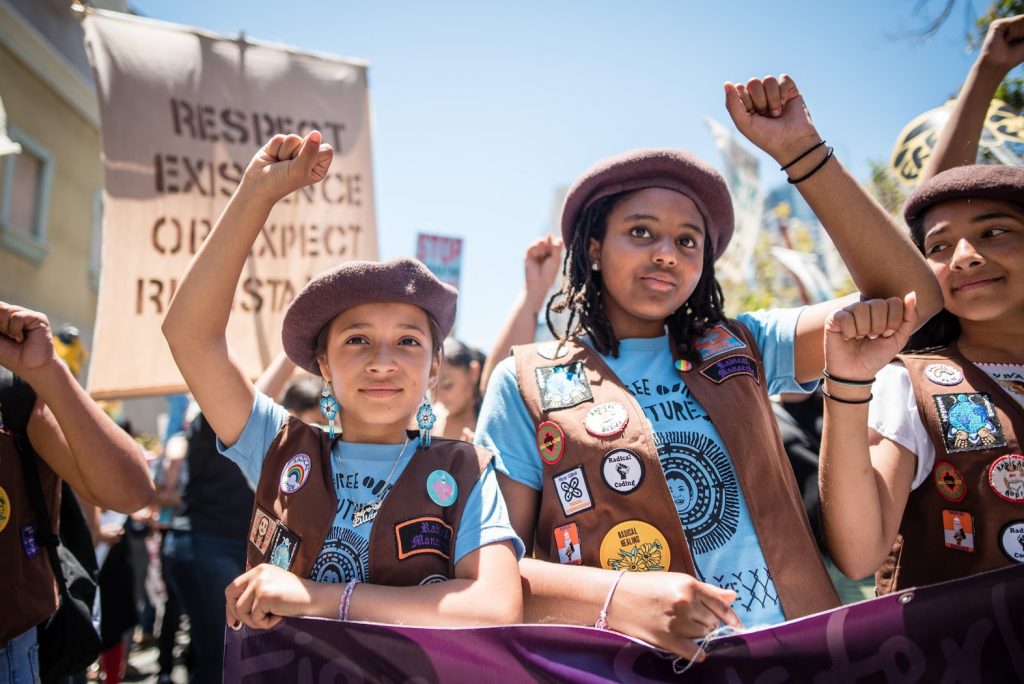July 20, 2024
by Carla Hay

Directed by Gabriela Cowperthwaite
Some language in Nyanja and Bemba with subtitles
Culture Representation: The documentary “The Grab” features a predominantly white group of people (with some Africans and Asians) discussing the international competition to control the world’s food and water.
Culture Clash: Certain countries have been aggressively buying up farm land and food companies in other countries as a way to get world domination.
Culture Audience: “The Grab” will appeal primarily to people who are interested in watching documentaries that are indications of where geopolitics will be headed.

“The Grab” is a riveting documentary that chronicles a searing investigation of geopolitics. It’s a vital look at how international competition to control food and water should be taken as seriously as the competition to control weapons of mass destruction. In many ways, “The Grab” could make a case that this control of food and water is much more dangerous than control of weapons of mass destruction because of the implications of which nations would have the most power if the world experiences a shortage of food and water.
Directed by Gabriela Cowperthwaite, “The Grab” had its world premiere at the 2022 Toronto International Film Festival. “The Grab” is the last documentary released from Participant Media, the production company that was founded in 2004 and shuttered in 2024. Participant Media had several fiction and non-fiction movies that were Oscar nominees and Oscar winners. Participant Media’s Oscar-winning documentaries included 2006’s “An Inconvenient Truth,” 2009’s “The Cove” and 2016’s “Citizenfour.”
“The Grab” follows an investigation by three journalists from the Center for Investigative
Reporting (a non-profit media outlet based in the San Francisco Bay Area), as they expose the often-covert international competition to control food and water. This journalist trio is led by Nate Halverson, who began the investigation and later recruited Emma Schwartz and Mallory Newman to help.
Halverson is shown doing the majority of the interviews (in person or by videoconferencing), while Schwartz and Newman do a great deal of the research. His journalist style is persistent without being too pushy. Newman is also assertive and has more experience than the quieter Schwartz. All three journalists show compassion and empathy for the average people who often are used as pawns in the various countries’ powerful political moves.
In the documentary, Halverson says the original question that he and other people wanted the answer to was: “Is another country making moves to control America’s food supply?” Halverson and his Center for Investigative Reporting colleagues went down a rabbit of information and soon found out that this issue was much more widespread and deeper than just controlling America’s food supply. In an early scene in “The Grab,” Halverson comments, “This project has kept me up at night more than any of my other investigation reporting projects combined.”
During the investigation, Halverson and his colleagues came into possession of several classified/confidential documents that were leaked to them by unnamed whistleblowers. Over 10,000 of these documents (which Halverson calls “The Trove”) are internal communications from Frontier Resources Group, founded by former mercenary Erik Prince. also founded Blackwater U.S.A., a mercenary group that he sold to go into the resource acquisition business.
The investigation named Frontier Resources Group as one of the biggest companies that profits from selling American farm land and U.S.-based food companies to foreign countries. Russia, China, and Saudia Arabia are named as the three of the countries that have been the most aggressive in taking ownership of land and companies that are rich in food and water over the past several years—not just in the United States but in many other parts of the world.
“The Grab” interviews several experts who have been studying or have firsthand knowledge of these geopolitical moves. “Food is a very obvious and central way to wield power,” says Molly Jahn, professor of agronomy and Laboratory of Genetics at the University of Wisconsin-Madison. Jahn is also program manager in the Defense Sciences Office at Defense Advanced Research Projects Agency.
Rod Schoonover, a former U.S. senior intelligence officer of the National Intelligence Council, comments on the possibility of World War III happening: “That doesn’t sound improbable to me.” Even if World War III doesn’t happen, the increasing number of natural disasters happening all over the world, in addition to the world’s population getting larger, have made it inevitable that there will be more competition for food and water. Access to affordable food and water can be used as ways to control populations of people.
“The Grab” shows several examples of these gradual takeovers and how an alarming number of people who work for these companies have no idea that these acquisitions are intended to for the foreign countries to amass power and control of the world. That’s because these takeovers are often purchased by mysterious companies (which are often shell companies listed as limited liability corporations, or LLCs) that have offshore accounts that are difficult to trace.
In 2013, the Chinese government (under the name WH Group Ltd.) acquired the American company Smithfield Foods, the world’s largest pork producer. This acquisition is named in “The Grab” as an example of the hide-and-seek deals where certain information is deliberately withheld from the public. In 2013, C. Larry Pope (Smithfield’s then-CEO) testified to the U.S. Senate Committee on Agriculture, Nutrition & Forestry that even though the Chinese government purchased Smithfield, the company would continue to do the same business as usual. Pope retired from Smithfield at the end of 2015.
However, Halverson came into possession of an internal WH Group Ltd. a document book manual detailing the financials of the Smithfield deal and how WH Group plans to make sweeping changes at Smithfield. The manual explicitly says that the information in the manual cannot be distributed in the United States. In “The Grab,” Halverson has a meeting with former Smithfield CEO Pope to show him these documents. Pope is astonished. Pope’s reaction is either sincere, or he’s a very good actor.
In “The Grab,” Halverson mentions that Saudi Arabia is running out of water to fuel its wheat export business. As a result of this water shortage, Saudi Arabia has been buying U.S. farm properties that have enough water to export to Saudi Arabia and can make enough hay to export to Saudi Arabia to feed the cows in Saudi Arabia. The costs of all this exporting to Saudi Arabia are outweighed by the profits in the areas that benefit from this exporting.
“The Grab” travels to La Paz County, Arizona, where an unnamed Saudia Arabian company has taken over one of the largest farm properties in La Paz County. “The Grab” has interviews with La Paz County residents John Weisser and Wayne Wade, who both report that their wells have run dry after this takeover. Weisser says, “There’s not enough rain to replenish it.” Wade comments on the water shortage in his well: “Pretty soon, there won’t be anything to take.”
Also interviewed is Holly Irwin, Arizona County Supervisor for La Paz County, who is shocked when she sees proof that her county’s residents are experiencing a water shortage in their wells that are apparently being depleted by the Saudi Arabian company. But there’s nothing she can do about it because it’s legal. That’s because Arizona is largely unregulated when it comes to foreign countries taking over Arizona-based businesses.
Africa is another place where the foreign takovers of farm land is thriving. It’s explained in “The Grab” that African farmers are especially vulnerable because they often don’t have deeds to the property that has been in their families for generations. Ethan Cousin, a former executive director of the World Food Programme, says about foreign countries’ takeover of land in Africa: “You can go around the continent and find different groups that prey on deprivation.”
One of the most compelling parts of the documentary is how it shows the civil rights work of attorney Brigadier Siachitema of the non-profit Southern Africa Litigation Centre. Siachitema represents several African farmers in land ownership cases where the farmers otherwise wouldn’t be able to afford attorneys. Felix Tomato and Febby Kalunga are among the farmers in Zambia who are interviewed by Halverson, who also interviews Siachitema.
They talk about white farmers who are funded by mysterious LLCs (many of which are traced back to China) that are displacing African farmers from their land. It’s another form of colonization. But compared to African farmers in previous centuries, today’s African farmers have more legal resources to fight back against these takeovers. It’s an uphill battle for many, but media coverage has made it possible for more people to find out about this problem.
That media coverage was apparently enough of a threat to get journalists Halverson, Schwartz, Newman and “The Grab” filmmaking crew detained at the airport in Serenje, Zambia, during a 2021 trip filmed for this documentary. In the detention room, the journalists see their names on a listed posted on the wall. Ultimately, this group was told to leave the airport because they were told that they were a “national security threat.”
Halverson says in the documentary that Russia is a country that is benefiting from climate change because of the way that Russia is hoarding resources in case of massive natural disasters. Victor Linnik, president of Miratorg (Russia’s leading meat-producer and supplier) says in the documentary that Miratorg recruits American cowboys to teach Russians how to be better farmers and ranchers. Todd Lewis, an American who used to be a manager for Miratorg, says in the documentary that he was hired in about 30 minutes during a phone interview.
Linnick says that food will become more powerful than weapons for world domination: “In the future, for Russia, the driver will be agriculture. We want to feed the world.” It’s mentioned in “The Grab” that Russia’s invasion of the Ukraine (which is rich in farm land) is part of this strategic plan. Halverson comments on Miratorg’s recruitment of American cowboys: “This was a decision that came from [Russian president Vladimir] Putin.”
Other people interviewed in “The Grab” are former CIA officer Robert Mitchell; Maria Otero, former undersecretary of the U.S.; Lee Gunn, former naval inspector general of the U.S. Navy; Aaron Salzberg, director of the Water Institute; former mercenaries John Gartner (founder of OAM International) and Simon Mann (founder of Executive Outcomes); former private military contractor Sean McFate; Robert Young Pelton, author of “The World’s Most Dangerous Places”; Hongzhou Zhang, author of “Securing the Rice Bowl: China and Global Food Security”; Andriy Senchenko, former Ukraine deputy chef of staff; and Edward Hargroves, co-founder of Goldcrest Farm Trust Advisors, which sells water to United Arab Emirates.
“The Grab” tackles these complex issues and makes them easy to understand for the average person who might not be knowledgeable about international politics. The sheer scope of the information uncovered could easily be put into documentary series. But as a documentary feature film, “The Grab” doesn’t get too cluttered and skillfully focuses on certain compelling examples. By also showing the behind-the-scenes work of the investigative journalists who took many risks to bring this information to the world, “The Grab” doesn’t lose sight of the intensity of the work and the sacrifices that are made when journalists expose unsettling truths that people need to know and will affect us all.
Magnolia Pictures released “The Grab” in select U.S. cinemas, on digital and VOD on June 14, 2024.

